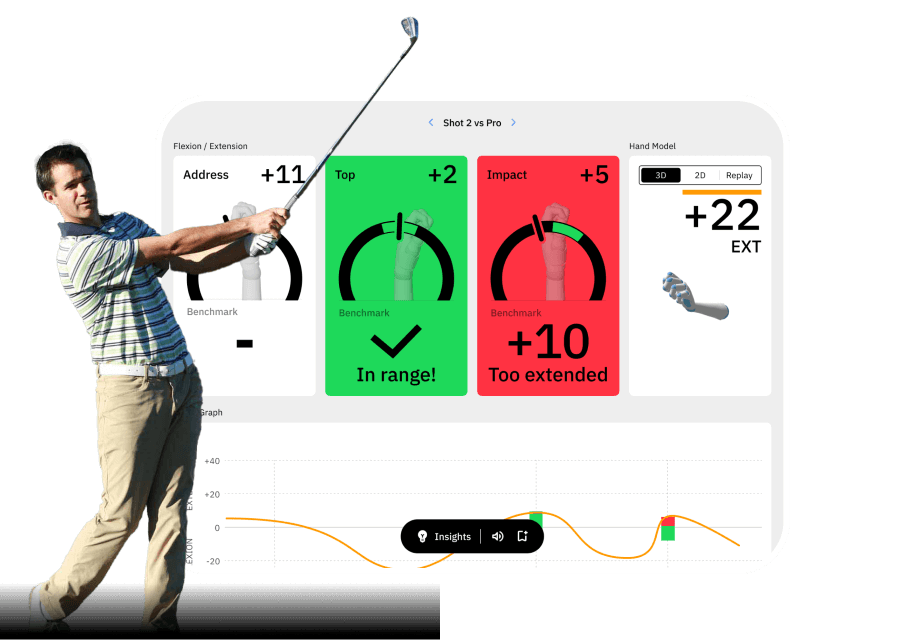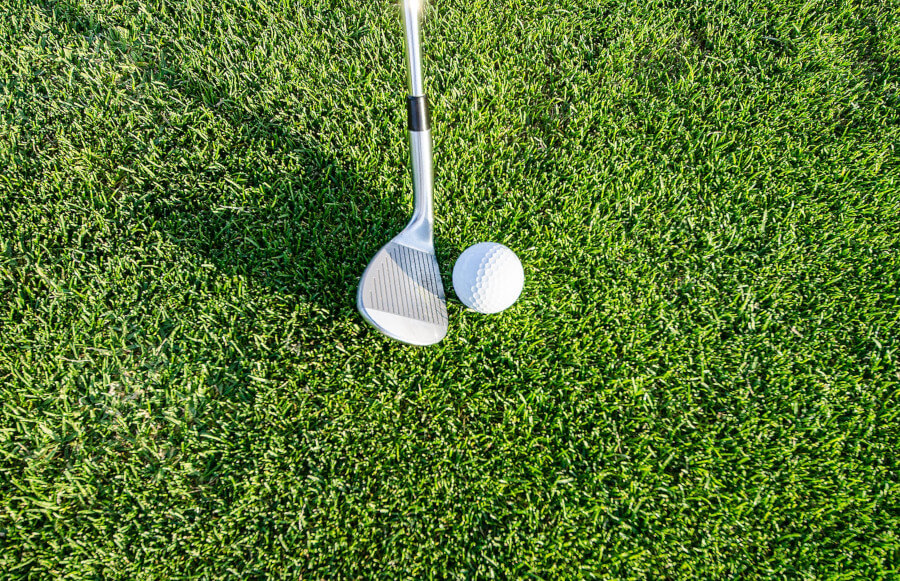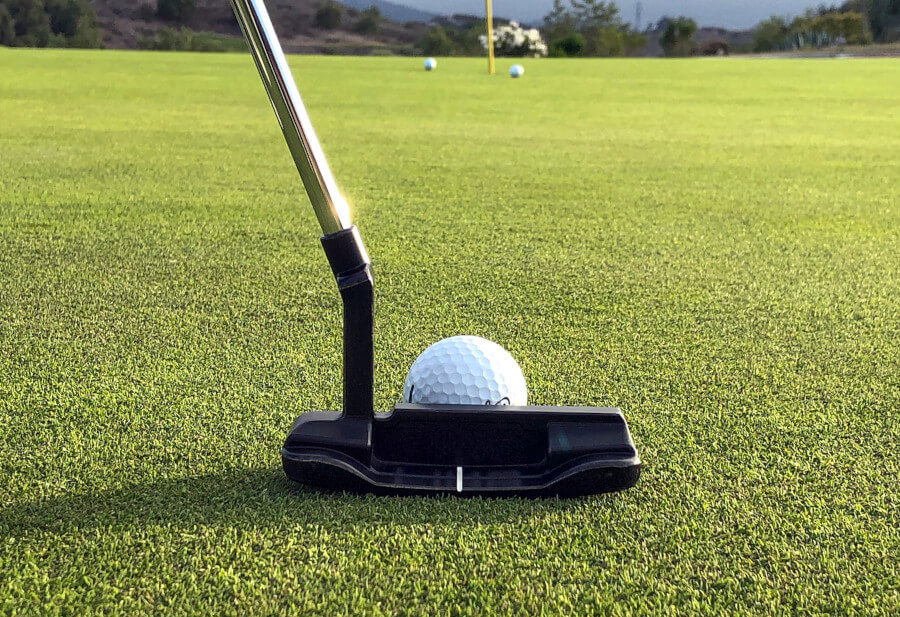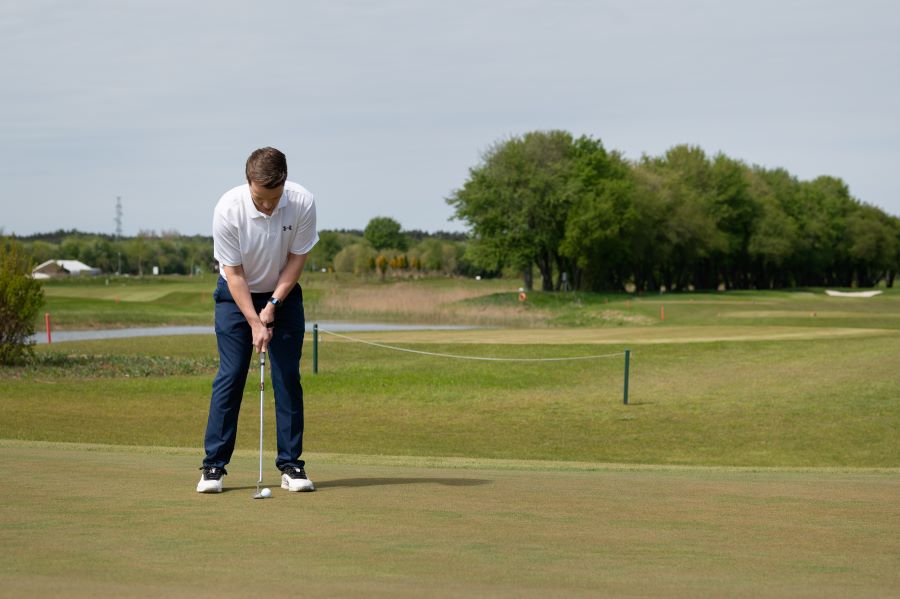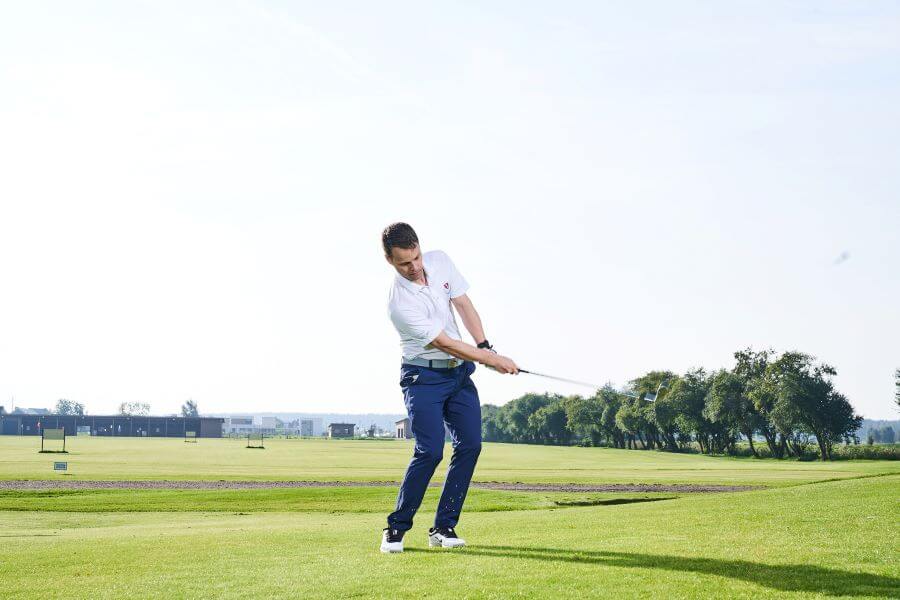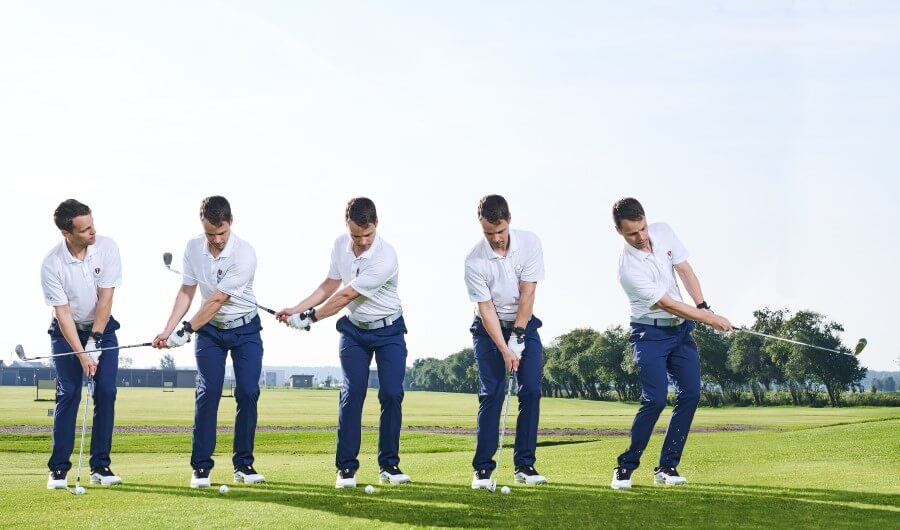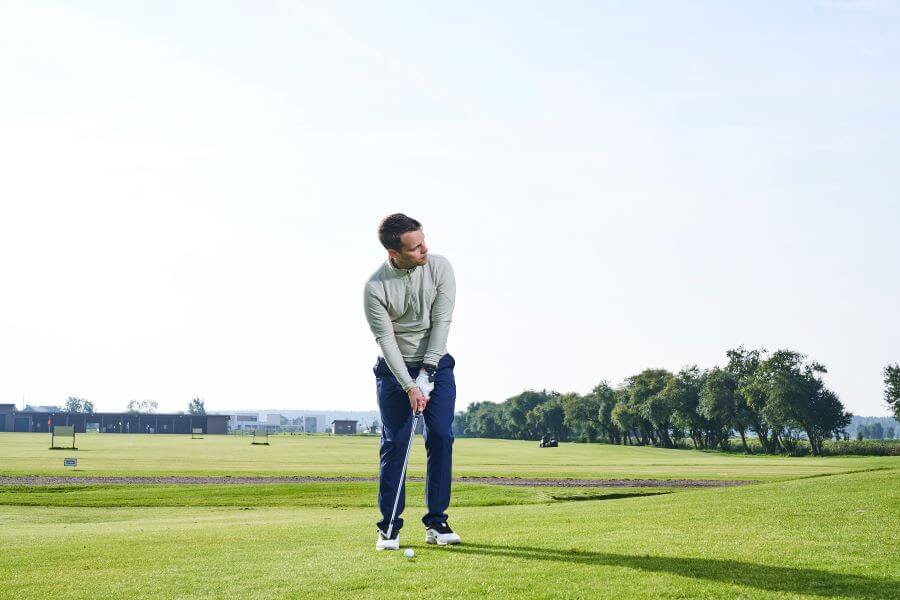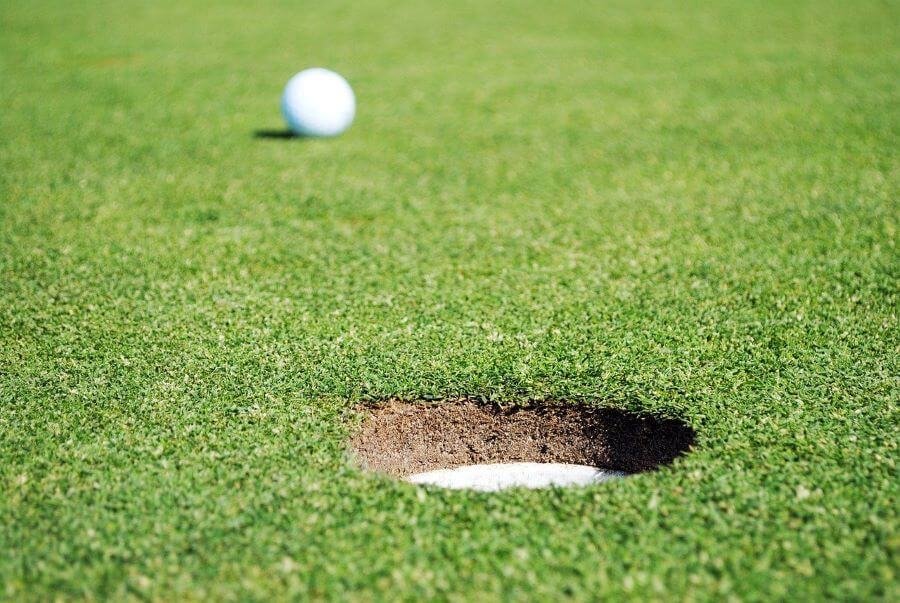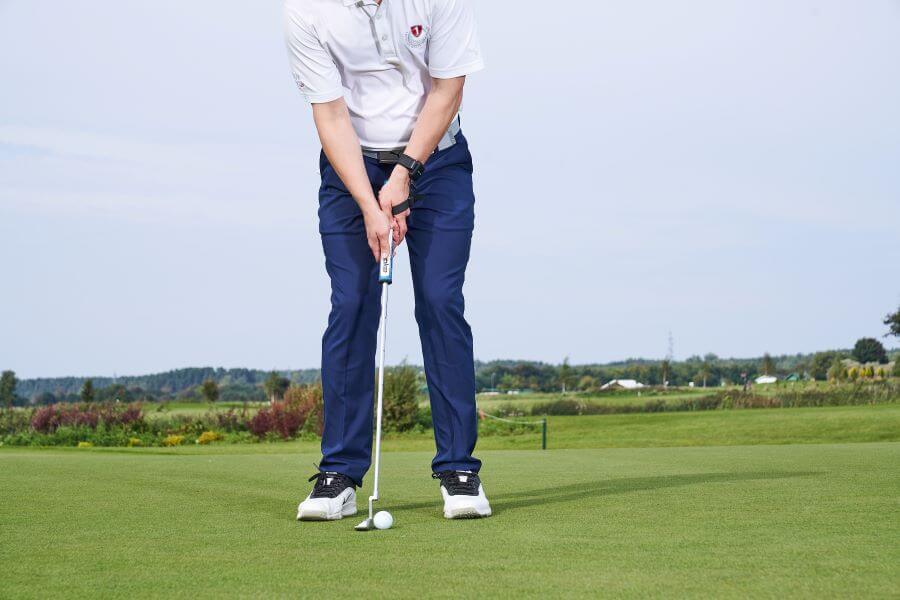12 Easy (and Effective) Tips to Improve Your Short Game
The short game is one of, if not the most fun, area of the game to practice. Why is this?
Changes to the short game have a very quick impact on the rest of your game. Even putting in a short amount of time on your chipping and pitching skills can save you several strokes out on the course.
The best short game tips are ones that you can implement immediately. Let’s face it; nobody wants complex ideas that make the game even harder than it is.
I have put together 12 easy and effective tips to improve your short game. It doesn’t matter if it’s your first day on the course or if you are trying to break 70; these tips can help.
Short Game Tips (Key Takeaways)
If you don’t have time to read my short game tips right now, here are a few of the most critical points you can learn.
- The short game includes putting, chipping, and pitching; the golfers who are really good practice and perfect all three.
- Putting leaves the least amount of room for error when approaching a golf hole, but it requires the most amount of practice.
- You have several tools in your bag to use for short games, don’t assume it’s just the wedges.
- Technology like HackMotion can help you see your strengths and weaknesses in your short game and develop a more consistent score.
Contents
- 12 Tips to Improve Your Short Game
- Hands Forward
- Change the Club, Not the Swing
- Choose the Least Dangerous Path
- Relax the Shoulders
- Get Closer to the Ball
- Lean Into It
- Move the Penny
- Read the Green
- Hit the Sand
- Wrist Position Determines Clubface Angles
- Be Careful with Straight Back/Straight Through
- Practice with Pressure if You Want It to Stick
- FAQs
- Summary
12 Tips to Improve Your Short Game
Hands Forward
Where are your hands when you are set up to hit a shorter shot around the green? For many golfers struggling with inconsistency in the short game, the hands are too far back at setup.
Instead of having hands in front of the ball or in line with the ball, the hands end up behind it.
Why is this a problem?
At setup, we want to get ourselves into a position that we can return to for impact. When you hit a great chip or pitch shot, your hands are in front of the ball at impact, the club is traveling down, and you will compress the golf ball.
When you set up this way, it’s much easier to return to it to make contact with the ball.
One word of caution here, if you extend your hands too far forward, you may find that you deloft the club and have a hard time getting the ball up in the air. Hands in line with the ball are plenty far forward.
Some golfers use this as part of a pre-shot routine when hitting chips and pitches, and it’s not a bad one. Push the hands slightly forward and then take the club back. Wearing the HackMotion wrist sensor during short game practice can help you see if your hands are starting in the same position.
Change the Club, Not the Swing
When I was younger, one of the best drills I ever worked on was to take the same location and hit various clubs. For instance, I would be about 20 or 30 yards from the hole and hit a 60-degree, 56-degree pitching wedge, 9 iron, 8 iron, and 7 iron. Depending on the lie, I may even hit a hybrid.
The idea behind this is to develop distance control and to learn what works from certain conditions. Some of these shots are hard to hit and are certainly not the best club selection.
However, that’s the point.
Some golfers think they have their sand wedge and their pitching wedge to choose from when on the putting green. In reality, you should have plenty of tools and options to use. Learning how to hit each of these clubs from various locations makes improving your shot game much easier.
This concept also increases confidence; I would give it a try.
Choose the Least Dangerous Path
Some short game shots are dangerous.
Let’s say you hit a driver and a 6 iron, and you came up about three yards short of the green.
You are lying on the fringe, the pin is in the front, and you don’t have any obstructions between you and the hole.
The goal here is to try and get the ball in the hole in one shot; if it takes two, that is fine. The LAST thing you need is to have this take three or more swings. However, it happens all the time.
The most straightforward shot to hit from here would be a putt. If the putt doesn’t work, keep the ball low with a chip. Finally, your last option would be to hit a high-pitch shot.
The lower you can keep the ball, the smaller the swing you need, so there is less chance of error. Take the path with the least dangerous result. At the very worst, you will want a chip on and a two-putt.
If you choose the wrong club here, expect to be across the green again, looking at another chip!

Relax the Shoulders
Tension is a killer in the short game. I noticed in my own game that tension can creep up on me and start to make it difficult to remember to use the big muscles instead of hands, wrists, and arms.
It’s important to hit down and through a chip or pitch shot. To do this with ease, let your shoulders relax and feel heavy right before you swing.
This relaxing of the shoulders will help you almost feel as though you are dropping your arms down a little again, which is not a bad thing.
With the shoulders relaxed, the hands and arms will relax a bit, and you will have an easier time hitting the ground.
Try this the next time you take a practice swing for a short game shot and see if it helps you clip the grass during the practice swing.
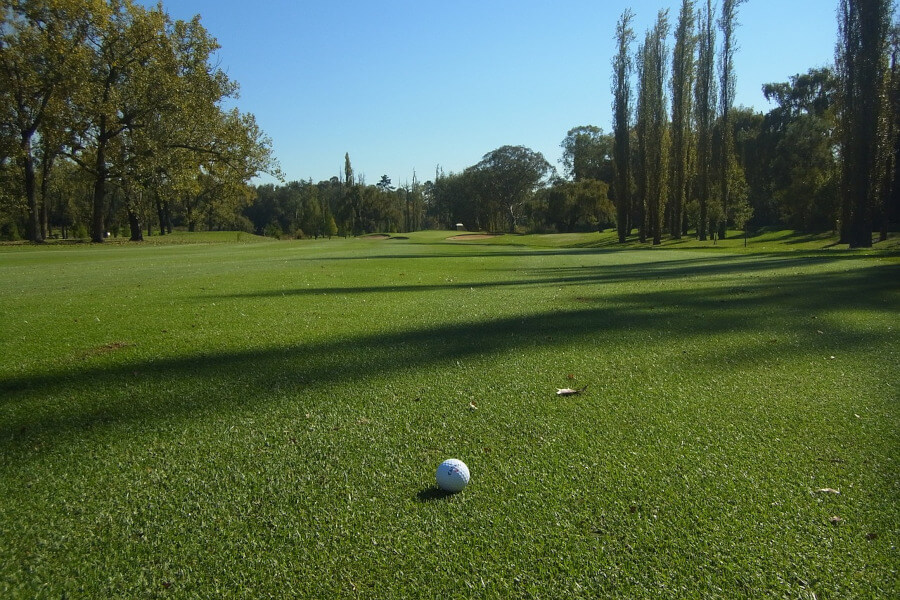
Get Closer to the Ball
Short game shots require everything to be smaller; the swing, the stance, the distance to the ball, and the length of the club.
Stand closer to the ball when hitting these shorter shots around the green. Hold the club further down so your hands are just above the shaft. The closer you are to the hole, the more narrow and tighter your stance can be.
Your feet will be narrower than shoulder width, and your hands may end up closer to your body (which is a good thing).
Lean Into It
A little weight on the left side is important in the short game. With these shots being shorter, there is really no need to transfer a lot of your weight to the right side.
Instead, lean on the left a little just before you swing and feel like you stay on that left side through impact.
You can experiment with how much to lean, which will likely vary depending on the shot. I find for the shorter shots; I can put about 80% of my weight on the left side. As I get further from the hole, I may do something like 60% of the weight on the left side.
For right-handed players, leaning into the left side (lefties can do the opposite and lean into the right) is going to help promote that descending blow; a crisp impact and a straight and high ball flight.

Move the Penny
If you struggle to make consistent contact with the golf ball during chipping, it could be simply because your concept of what impact looks like (and feels like) is incorrect.
Put a penny down on the ground where the golf ball would go. Your goal is to get this penny to move forward. Take a small chip shot swing with your pitching wedge or sand wedge and see if you can move the penny.
If you come into impact and the club is moving up (flipping your wrists), then you won’t be able to move the penny. If you hit down and through the ball, it’s going to jump forward. Get the penny to move a few times, and then replace the penny with a golf ball.
The concept remains the same.
Read the Green
Many golfers take the time to read the green when striking a putt; however, very few attempt to do it when hitting a chip or pitch shot.
Don’t do this!
For many chip and pitch shots, your goal should be to hit the golf ball in the hole. You have made it this far and are this close to the green; stop playing for the center.
Of course, if you are headed over a bunker and there is a water hazard behind the hole, get the ball on the green. However, many times the shots are simple, and you can chip them in if you spend just a second to read the green.
Look at the entire shape of the green and how it is sloped. Think about how your shot is going to bounce when it makes contact with the surface of the green. Chances are it will hit and bounce left or right, depending on the slope of the green.
In addition, take a look at whether or not the pin is uphill or downhill from where you are standing.
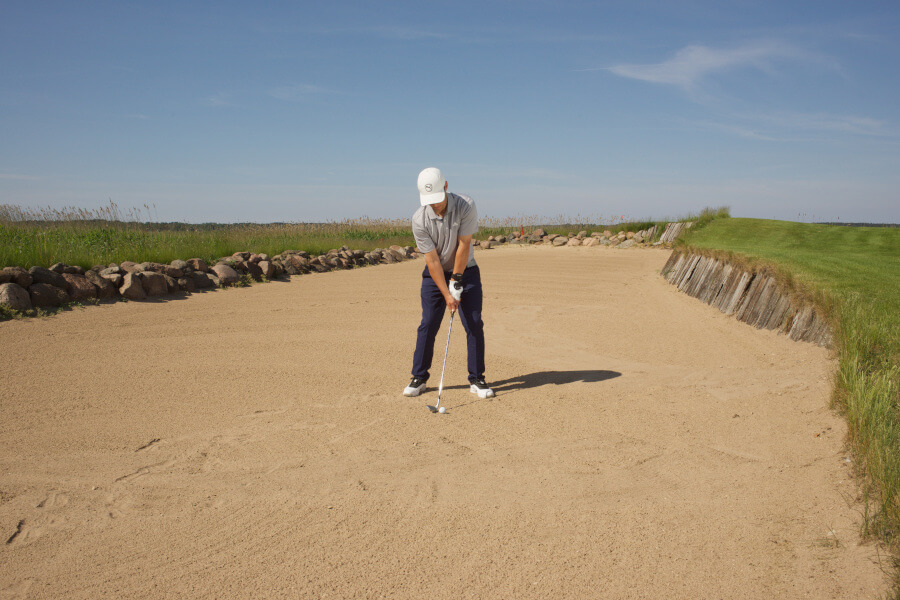
Hit the Sand
When hitting a sand shot, you must hit the sand!
This seems so simple, but it can feel wrong when you are in the position. Always hit the sand behind the ball and then allow the ball to fly out of the bunker on the sand.
If you struggle with this concept, head into a bunker and draw a line behind the ball with your club. Each time you take a swing, ensure you hit the line and the golf ball. It’s a bit different from other short game shots and still requires a descending approach angle, but you must hit the sand to see the ball fly up.
Wrist Position Determines Clubface Angles
HackMotion is an excellent tool for helping you work on your short game and become more consistent in the short game.
I’ve specifically used the HackMotion to work on my wrist position and how it impacts the clubface angle in the short game. Even though a chip or a pitch may have a shorter swing and less overall motion, the clubface still needs to be square when you make contact.
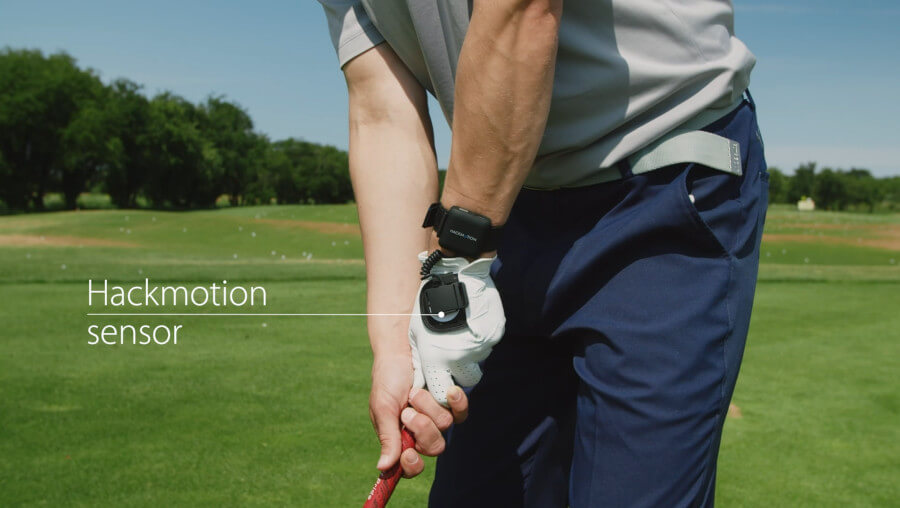
Wear the HackMotion for five or six chips and see what your stats look like. Are you adding an extension on the downswing (opening the clubface up), or are you learning to square things up toward the target?
Wrists come into play during the short game, and practicing these positions until they are consistent is a great way to fine-tune what you do around the greens.
Be Careful with Straight Back/Straight Through
If we are talking about a short game, we might as well throw in a little putter tip.
There are two basic putting strokes, the straight back and straight through, and the arc style putting stroke.
Both of these putting strokes can be effective. However, there are some issues that players need to be aware of.
With the straight back and straight-through putting stroke, some players try to maintain that clubface angle pointing to the ball for too long. When this happens, the clubface is probably starting to shut down; the result is a pulled putt.
With a pulled putt being one of the most common misses in golf, you will want to be sure you are not over-exaggerating this straight back and straight-through motion.
On longer putts, the clubface is going to rotate a bit because your body is going to rotate.
Practice with Pressure if You Want It to Stick
Have you ever hit shots on the driving range and felt like it was really easy? This is common.
You can quickly become a driving range star, but performing on the golf course is much different.
Why does this happen?
Most of the time, it’s because there is no pressure in the short game. If you want to continue to make progress and get that translated to the golf course, put the pressure on.
Challenge yourself, play a game with a partner, and pretend to play a golf hole. You can do any of these things; however, if you stand there and just hit one shot after another, you won’t learn to transfer much to the golf course.
FAQs
Here are a few commonly asked questions about how to quickly and effectively improve your short game.
Why is my golf short game so bad?
Your short game is poor because of the lack of consistency in the motion you make. Using something like the HackMotion could help you move your wrists consistently and start to improve turf interaction. The short game requires attention to detail and practice to get better.
How can I improve my short game at home?
Chipping in your yard with plastic or foam golf balls and setting up a putting mat or green at your home are great ways to improve your short game at home.
You don’t need anything fancy; I used to try and chip shots from a mat on the patio to an empty coffee can in the yard.
How much should I practice my short game?
Golfers love to stand on the range and practice hitting their drivers; short game practice should make up 50% or more of your total practice time. If you spend an hour on the range working on your swing, spend the same amount of time working on the short game.
What grip is best for short game?
Overlap and interlock grips work fine for the short game; if you have a problem with feel and touch, you may want to try the overlap, as it tends to lighten the grip pressure.
What is the difference between chipping and pitching?
Chipping is a shorter shot that stays low to the ground, lands on the green, and then continues to roll to the hole. Pitch shots have more loft, fly higher, and stop quicker than chip shots.
The difference between chipping and pitching is important to understand because both shots can be used to help you on the course.
Summary
The short game is a fun thing to practice. If you get good at shorter shots, it’s easier to score. Time spent on your short game will translate to the course much quicker than time spent on the long game.
Use these tips to get your game to the next level. If you want to check on progress and understanding, investing in HackMotion will help you get there.

